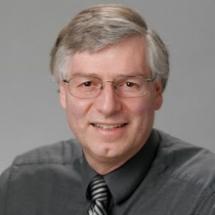
Prof. Chris Palmstrøm
Electrical and Computer Engineering and Materials,
University of California, Santa Barbara
Heteroepitaxial Growth of Novel Materials and Structures
The ability to integrate dissimilar materials with different crystal structures and properties enables heterostructures to be developed with new functionality. Lattice matching, interfacial bonding and reactions are issues that need to be addressed for heteroepitaxial growth of dissimilar materials. Molecular beam epitaxial (MBE) growth in combination with in-situ and ex-situ atomic level characterization techniques enables studies of nucleation and epitaxial growth processes and interfacial reactions. We have investigated the growth of a number of dissimilar epitaxial materials on III-V semiconductors and metal oxides including ferromagnetic Fe, FeCo, Full-Heusler compounds (such as Co2MnSi, Co2FeSi,..), semiconducting and potential topological Half-Heusler compounds, and rare earth monopnictides-III-V semiconductor nanocomposites. These studies have been used to optimize interface and material properties of these dissimilar materials heterostructures for spin based semiconductor devices (spintonics) and thermoelectric applications.
Chris Palmstrøm is a Professor in the Electrical and Computer Engineering and the Materials Departments at the University of California, Santa Barbara. He received his B.Sc. in physics and electronic engineering in 1975 and Ph.D. in electrical and electronic engineering in 1979 from the University of Leeds.
After being a Lecturer in Norway and a Research Associate at Cornell 1980-1985, he joined Bellcore as a Member of Technical Staff in 1985. From 1994-2007 he was a Professor in the Department of Chemical Engineering and Materials Science at the University of Minnesota in 2004 and became the Amundson Chair Professor. In 2007 he joined the faculty at the University of California, Santa Barbara. He has pioneered dissimilar materials epitaxial growth studies using a combination of molecular beam epitaxial growth with in-situ surface science probes including scanning tunneling microscopy, atomic force microscopy, x-ray photoelectron spectroscopy, and ex-situ structural and electronic characterization. An important aspect of his work has been to go beyond surface science and structural studies to make materials for device structures allowing for detailed electrical and optical measurements of materials and interfacial properties. Specific studies have emphasized metallization of semiconductors, dissimilar materials epitaxial growth, thin film analysis, and molecular beam and chemical beam epitaxial growth of III-V semiconductor heterostructures, metallic compounds, metal oxides, multifunctional, magnetic, thermoelectric, and spintronic materials, and superconductors. He is the author of over 250 publications, including five review chapters and research monographs, and over 150 invited and plenary presentations.
Palmstrøm has served in many professional society leadership roles, Physical Review B editorial board, organized and co-organized several scientific conferences and is a Fellow of AVS, APS and MRS.

